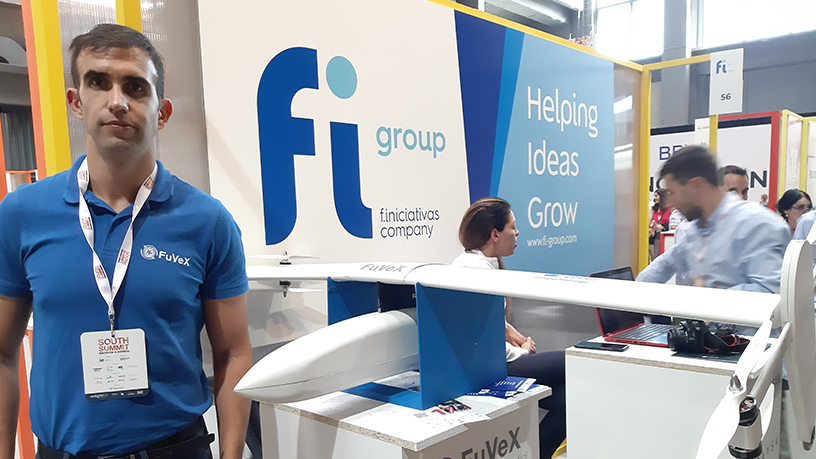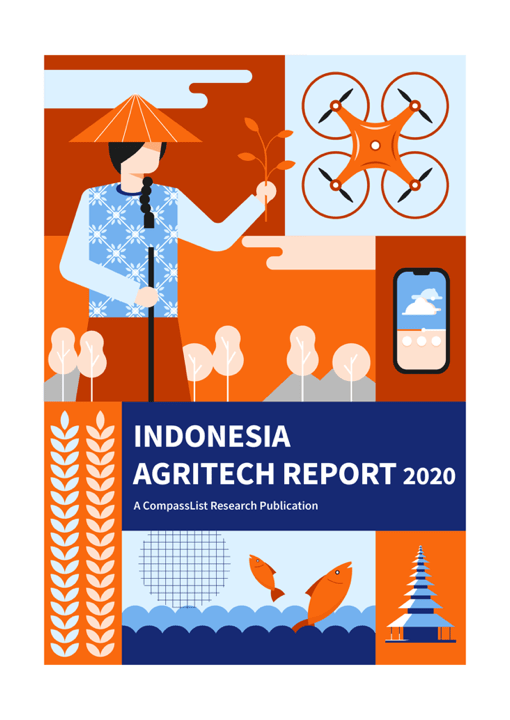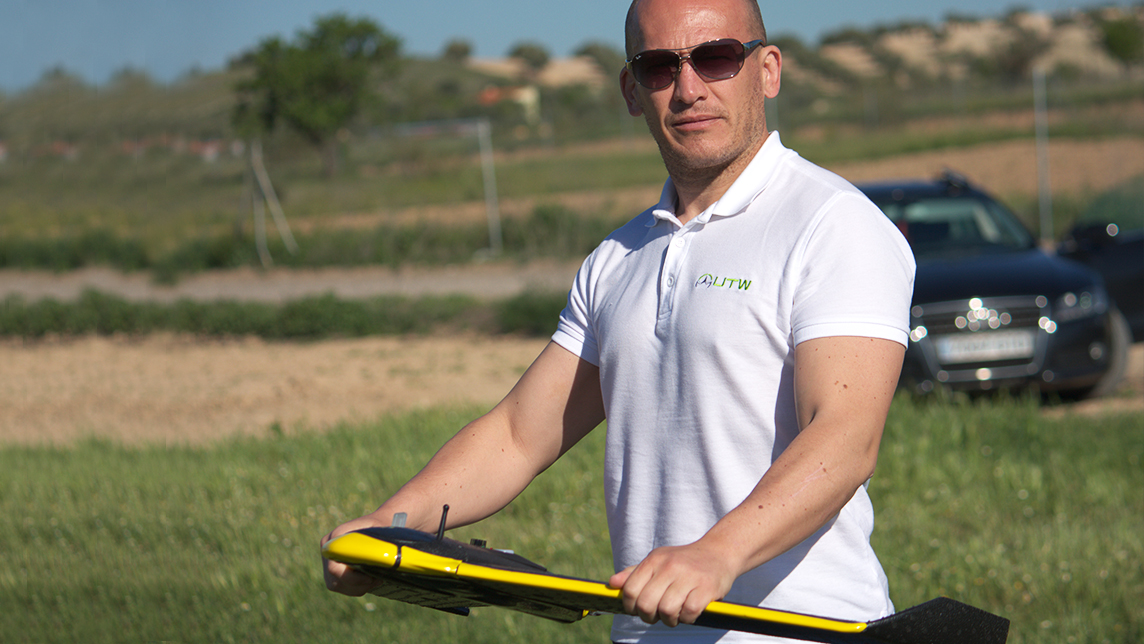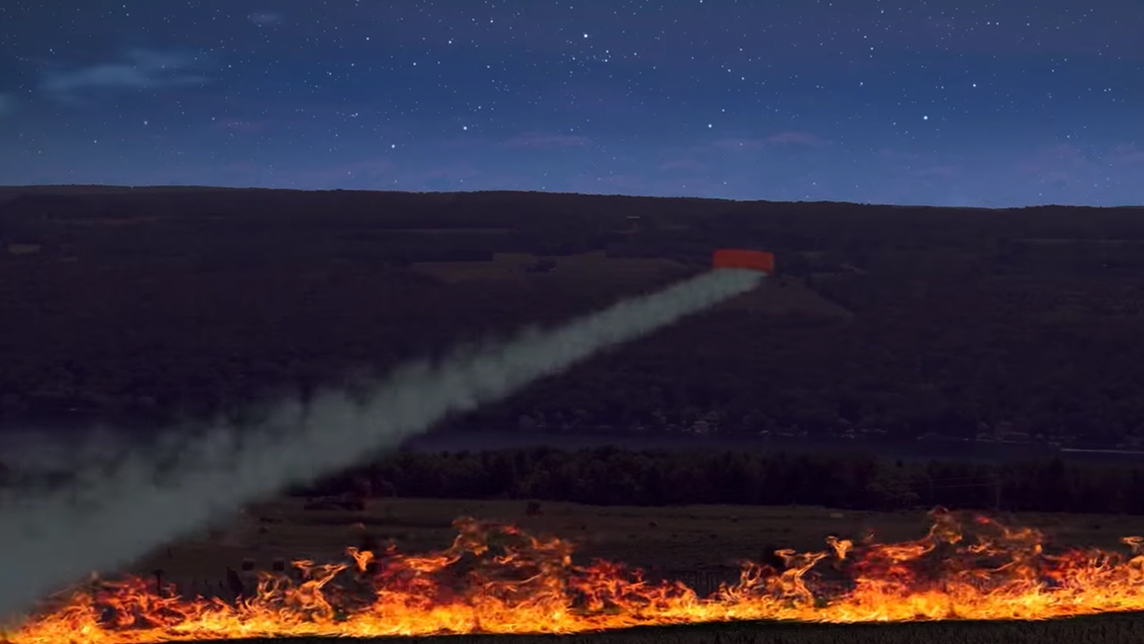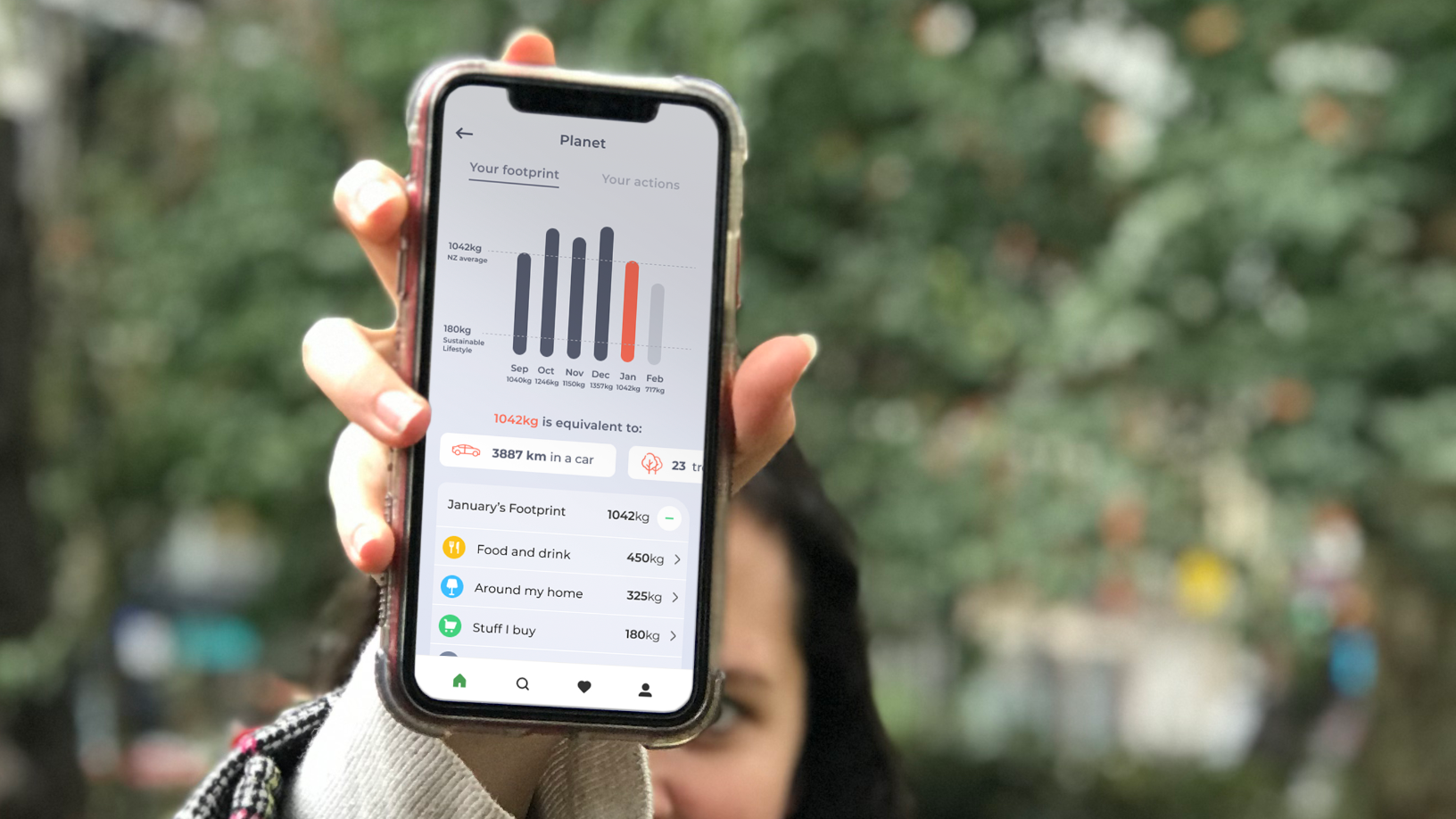“In the drone sector, uncertainty is everywhere, but one thing is sure: long-range drones will disrupt not only how aerial support is delivered, but the entire aerospace sector as a whole," according to Carlos Matilla Codesal, CEO and co-founder of long-distance drone maker FuVeX.
The Navarre-based startup was showing off its long-range drone technology at the recent South Summit, Madrid's biggest tech and startup event. But FuVeX's innovative designs are not the kind of drones that most people are familiar with. The glider-shaped crafts take off and land like helicopters, but, crucially for their functionality and marketability, fly like airplanes.
FuVeX is readying two drone designs for commercialization, one of which weighs in at 5 kg and the other at 24 kg, just below the weight where aircraft regulations would start to apply. The startup's patented drones are among the fastest built to date: the 5 kg QCPA-05 can reach speeds of 100 km/h and has a range of 50 km, 31 times that of commercial drones. Its other model, the QCPA-25, reaches speeds of 125 km/h with a range of 320 km.
"Even more than speed, it is important to stay in the air longer and have greater range," Matilla told CompassList in an interview. "Commercial drones operate like helicopters, which have five times less range than aircraft. Planes need a runway and are complex to operate.
"We produce a hybrid of both, with the best of each design. Besides having complete flexibility in takeoff and landing, the QCPA-25 can stay airborne for up to four hours."
Plane and helicopter benefits
Of the approximately 15 companies worldwide with patents in long-distance drones, FuVeX's designs have 15% more range than other vertical takeoff and landing drones, said Matilla. The company's designs are also 47% less sensitive to wind than other long-distance models, making them easier to operate in mountain terrain.
Long-range drones, unlike short-range models, have many potential business uses where helicopters are currently employed, with the added advantage of not requiring human in-vehicle operation.
"Our main focus is on fulfilling the need for lean, low-cost solutions in power line inspection. Currently, the industry uses helicopters, but is willing to change. Helicopters are complex to fly and very expensive, and, of course, our solutions won't endanger any pilot's life," Matilla said, adding that he expects FuVeX's solutions to cost "10 times less than a helicopter."
At present, the only competitors in this segment are a few US companies, including Precision Hawk and Volanti Drones. FuVeX's other major objectives are to enter the linear inspection market niche – for example, inspecting railway lines – as well as maritime inspection of off-shore infrastructures, such as rigs and wind farms. In this capacity, the ability of long-range drones to takeoff and land from a fixed position with no runway, or even large space, required is a major boon.
FuVeX's drones will cost 10 times less than a helicopter
The company's drones could also be used to monitor hard-to-track maritime problems such as overfishing and illegal marine dumping of waste. FuVeX also recently tested delivery of medical supplies with the Spanish postal service, performing the first Spanish drone flights beyond the visual line of sight. Both the QCPA-05 and QCPA-25 are suitable for all of the aforementioned tasks and have the capacity to carry the sensors and cameras used in technical inspections.
Awaiting regulatory green light
In Spain, experimental flights beyond the visual line of sight have, until now, been permitted, allowing FuVeX to test its technology. However, the requirements to fly beyond the visual line of sight industrially are still being fixed by the European Union Aviation Safety Agency (EASA), a governmental agency that includes all EU nations and additional signatories such as Switzerland and Turkey.
"Our main objective is to sell not just here in Spain but across all of Europe, and regulation is the market barrier," Matilla said. "Though the current drone sector is the Wild West and you can do almost anything you want, the next stage, i.e., beyond the line of sight, is not the same and constitutes aerial transport. This is one of the most regulated environments in the world, and, within this sector, you are building a new sector."
FuVeX was not going to take any chances before the new EASA regulations, which will have huge implications for product specifications, come into effect in a gradual phase-in starting in June 2020. The CEO pointed to the example of Aerobotics, a South African drone startup that fully commercialized its product before regulations came into effect. Aerobotics is now laying off staff.
For Matilla, the regulatory hiccup means that, four years after founding FuVeX, not only has the company yet to start commercialization, it has also been unable to determine prices and decide whether to manufacture the drones in-house or to outsource the process.
Regulation is the market barrier
The 12-person-strong FuVeX team has remained busy by promoting its technology at events like South Summit, building future commercial relationships, especially with energy providers, and seeking financing. The company is closing a €500,000 post-seed round with an unnamed Spanish utility firm to prepare for commercialization once regulations come into effect.
To date, the company has received €110,000 in funding, plus acceleration, from Navarre-based agtech accelerator Orizont, where FuveX's operations are still housed. Orizont is interested in the drones' potential for use in monitoring deforestation and the delivery of emergency equipment. In 2016, the company also received funding from Horizon 2020, the EU's innovation program for startups.
FuVeX has won several prizes for its technology, including at the European Commission Startup Europe Awards, where it took home the 2018 prize in the aerospace category. In 2016, FuVeX won third prize at Spain's prestigious Entrepreneur XXI Awards, which recognizes startups with high growth potential.
Flying car ambitions
FuVeX's highly lauded technology only came about because of a product pivot in the first days of the company's life, explained Matilla. Matilla, an aerospace engineer, and co-founder Carlos Castellano Aldave, an industrial engineer and a director of R&D at the Public University of Navarre, had already spent two years working on an even more ambitious project: using the same technology to produce a four-seater "flying car."
"It was impossible to fund, we couldn't get the necessary investment, and so we pivoted, using the same concept of vertical takeoff and landing with far fewer costs involved," Matilla said. He added that the flying car remains his "ultimate dream."
Prior to meeting Castellano, Matilla, who also studied Naval Architecture, had directed his research efforts toward developing an underwater "robosub" from 2011–12. During this period, he received €55,000 in sponsorship to enter the 15th RoboSub Competition, organized by the US Navy and the Association for Unmanned Vehicle Systems International in San Diego, California.
"At that time, in the middle of the economic crisis in Spain, the project completely changed my life. I was given this amazing opportunity to do something in one year, and I took it and worked like crazy," he said.
